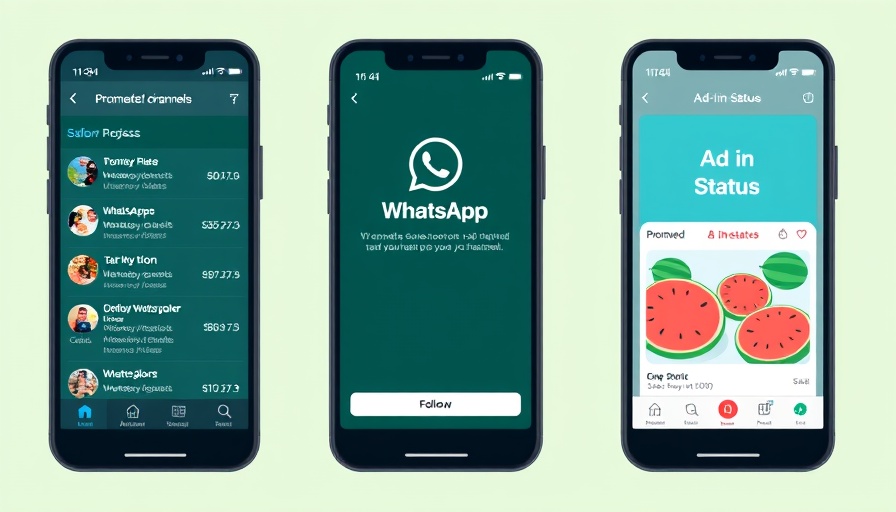
The Game Changer: Ads on WhatsApp
In the ever-evolving landscape of digital marketing, the announcement of ads coming to WhatsApp marks a significant shift for small businesses eager to connect with customers. As one of the world's most popular messaging apps, boasting over 2 billion users, WhatsApp's integration of advertisements opens new avenues for brands to reach their target audiences directly and personally.
Historical Context: Evolution of Messaging Apps
Messaging apps have transcended their initial purpose of peer-to-peer communication. Platforms like Facebook Messenger and Instagram have long integrated ads, shifting the paradigm of how businesses approach outreach. WhatsApp’s decision highlights a growing trend where messaging services evolve to become business tools. This change not only increases engagement but also presents challenges for small business owners as they adapt to new marketing techniques.
The Relevance of WhatsApp Ads to Small Businesses
For small businesses, WhatsApp offers a unique opportunity to cultivate customer relationships. The fierce competition and advertising costs on traditional social media platforms can be daunting, yet WhatsApp enables a more personalized interaction without the barrier of intrusive ads. With WhatsApp ads, businesses can seamlessly integrate marketing into everyday conversations, enhancing their visibility while retaining authenticity.
How Will Ads Impact User Experience?
Concerns about the impact of ads on user experience are valid. User-centric platforms often face a backlash when monetizing their services. However, if executed correctly, WhatsApp ads could enhance the experience by providing users with meaningful offers directly relevant to their interests. Small businesses can utilize data-driven insights to craft targeted campaigns that resonate, potentially turning casual users into loyal customers.
Future Trends: What to Expect from WhatsApp Ads
As WhatsApp rolls out ads, it will be vital for small business owners to monitor emerging trends and adapt their strategies accordingly. Expect to see an increase in rich media formats, where brands can share videos and images that capture attention more effectively than static ads. Interactive elements may also become a staple, enabling users to engage in conversations or answer surveys directly from the ad interface.
Potential Challenges and Strategies for Success
Incorporating WhatsApp ads into a marketing strategy is not without its challenges. Businesses must navigate user privacy concerns and ensure that ads do not disrupt the organic flow of communication. Developing a strategic approach that respects user experience while effectively promoting products and services will be crucial. Small businesses might find success by creating engaging, community-driven content that fosters dialogue rather than mere advertisement.
Conclusion: Embracing Change and Building Relationships
The introduction of ads on WhatsApp represents an exciting opportunity for small businesses to engage customers in a modern way. By adapting to this new landscape, businesses can foster stronger connections with their audience, turning conversations into conversions. As small business owners consider how to leverage WhatsApp ads, they should focus on creating valuable content that speaks to their customers' needs.
 Add Row
Add Row  Add
Add 




Write A Comment